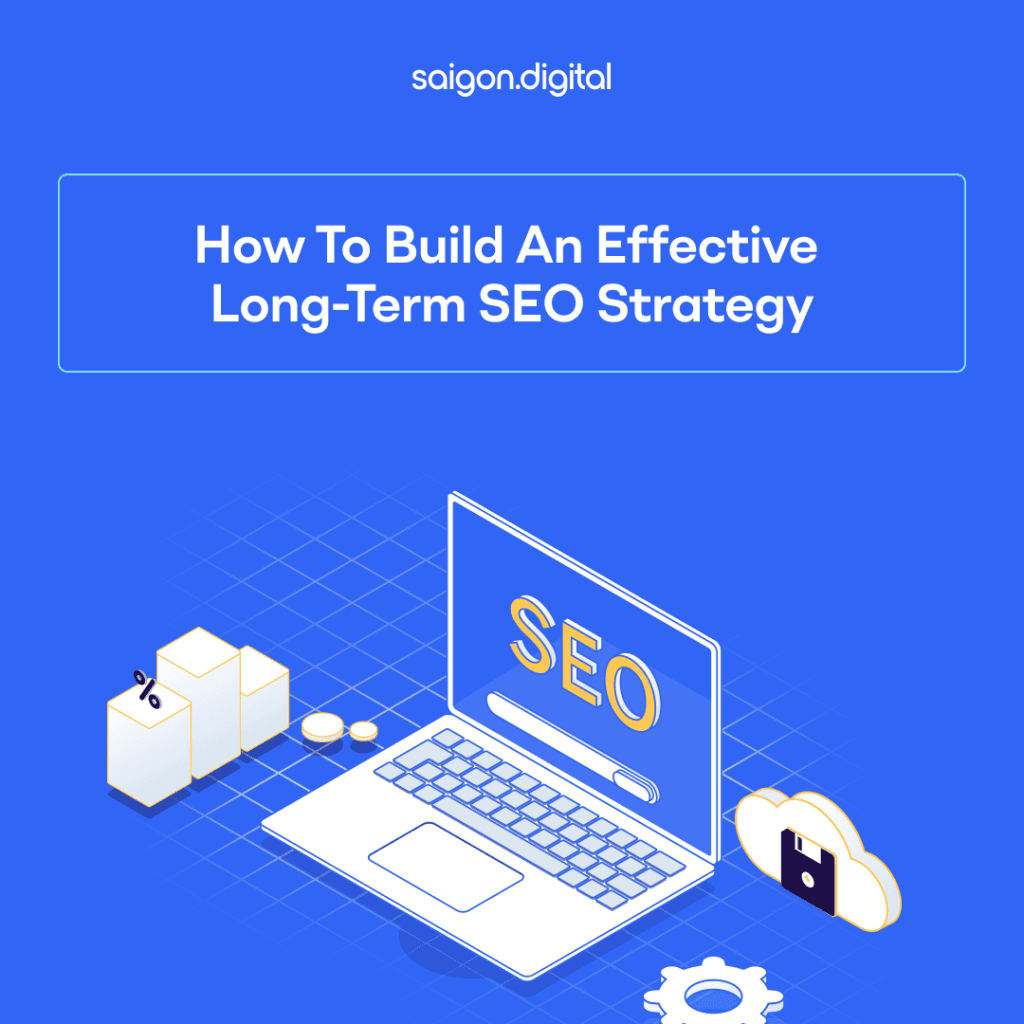
What is an SEO Strategy?
An SEO strategy is a structured plan designed to improve your website’s visibility in search engines. It’s the process of organising your content by topic, optimising your site structure, researching keywords, and earning backlinks, all to help your content appear higher in search engine results pages (SERPs). But it’s more than just tactics and rankings. A strong SEO strategy is about understanding your audience, solving their problems, and building a trustworthy presence online that grows over time. It requires patience, consistency, and adaptability.Why a Long-Term SEO Strategy Matters
SEO is a long game, think of it more like planting a garden than flipping a switch. You might not see instant results, but with regular care and the right strategy, your site will flourish. Your site flourishes also means your visibility will increase as well, drawing more people’s attention towards your business, services and/or products. To go into further detail, here’s some of the main reasons why focusing on long-term SEO strategies pays off:- Algorithm Changes Are ConstantSearch engines like Google frequently update their algorithms to improve search quality. A long-term strategy ensures your site remains compliant and competitive, even when updates roll out.
- Organic Traffic Is Sustainable and Cost-EffectiveUnlike paid ads that stop delivering once your budget runs out, SEO provides compounding returns, meaning the longer you work at it, the more value it returns.
- Builds Authority and TrustA well-optimised website with valuable content earns trust from both users and search engines. This trust translates to higher rankings and better conversions.
Key Components of a Successful Long-Term SEO Strategy
Now that we’ve established why your business needs a long-term SEO strategy, let’s walk through the core components that make up a solid long-term approach to SEO.1. Clear Business Goals and Audience Understanding
Before doing any kind of SEO methods, be it keyword research or on page SEO, you need clarity on two things:- What are your business goals?
- Who is your target audience?

2. In-Depth Keyword Research
After answering the two questions from the section above, we move on to keyword research. Keyword research remains at the heart of all strategies of SEO. You must remember, it's not just about finding high-volume keywords, it’s about finding the right keywords. Focus Areas:- Search intent: Why do people search for this keyword? Are people looking to buy, learn, or compare?
- Long-tail keywords: Besides short-tail keywords, which can be quite competitive, long-tail keywords are less competitive, more targeted, and easier to rank for, especially if you operate in a niche field.
- Topic clusters: Group related keywords under themes. This helps you have a broader idea of what your content should be, you can have an easier time doing internal linking as well.
- Google Keyword Planner
- Ahrefs
- SEMrush
- AnswerThePublic
- Google Search Console (for your current rankings)
3. Content That Educates, Engages, and Ranks
Content is the engine of your SEO strategies. But not just any content, it needs to be useful, relevant, and optimised for the keywords you’ve researched. Best Practices:- Write for humans first, search engines second.
- Include primary and secondary keywords naturally.
- Use headers (H1, H2, H3) to structure content.
- Add internal links to related blog posts or service pages.
- Incorporate visuals: images, infographics, videos.
4. On-Page SEO Best Practices
Once the content is written, you need to optimise it. SEO best practices for on-page optimisation include:- Title tags with your focus keyword.
- Meta descriptions that drive clicks.
- URL slugs that are clean and descriptive.
- Alt text for images to improve accessibility and search visibility.
- Schema markup to enhance how your page appears in SERPs.
5. Technical SEO: The Foundation
Even the best content won’t rank if your site is slow, broken, or confusing to crawl. Make sure your technical SEO is sound and optimised for viewing. Key Areas:- Fast page speed (aim for <2 seconds).
- Mobile responsiveness.
- Secure connection (HTTPS).
- Clean site architecture and internal linking.
- No broken links or duplicate content.
- XML sitemap submitted to Google Search Console.
6. Build High-Quality Backlinks
Backlinks are a strong ranking signal. But it’s best if you don’t obsess over the number of backlinks your website has, you should instead focus more on the quality. Smart link-building strategies:- Guest blogging on reputable websites.
- Partnering with local directories and industry bodies.
- Creating shareable content (tools, infographics, guides).
- Earning mentions through PR and media outreach.
7. Monitor, Measure, and Adapt
No strategy for SEO is complete without ongoing analysis. Use analytics and reporting to track what’s working and where you can improve. Track:- Organic traffic and keyword rankings.
- Bounce rates and time on page.
- Conversion rates from organic visitors.
- Technical health of your site.
Step-by-Step: How to Build a Long-Term SEO Strategy
Now that we’ve gone over all the best practices and components needed in an SEO strategy, it’s time to put this knowledge into action. Creating a long-term strategy for SEO is all about building a foundation that continues to grow and evolve. Here's how to do it effectively.1. Define Your Goals and Target Audience
Before diving into the tactics, you need to be clear on what success looks like. Are you aiming to increase traffic, generate more leads, boost e-commerce sales, or build brand authority? Just as importantly, understand your audience. What are they searching for? What problems are they trying to solve? Use tools like Google Analytics, Google Search Console, and customer feedback to identify patterns. Example: If you're a local accounting firm, your goal might be to increase organic traffic from nearby businesses. Your audience would likely be small business owners searching for services like “accountant in Melbourne” or “BAS lodgement help”.2. Conduct In-Depth Keyword Research
Keyword research is the foundation of every effective SEO strategy. It’s how you ensure you’re targeting the right topics your audience is searching for. Look for a balance between short-tail keywords (e.g. “SEO”) and long-tail keywords (e.g. “how to create a long-term SEO strategy”). Long-tail keywords tend to have lower competition and higher intent, making them ideal for building authority. Use tools like Ahrefs, SEMrush, or Ubersuggest to:- Identify relevant keywords
- Understand search intent
- Analyse keyword difficulty
- Spy on competitors

3. Create High-Quality, Optimised Content
Once you know which keywords to target, create content that answers your audience’s questions better than anyone else. This proves your expertise in the field which draws people in and keeps them on your website. They will grow to trust your knowledge and are more willing to use your services and/or products. This is where many strategies of SEO tend to fall short, they focus too much on keywords and not enough on the user experience. Google prioritises helpful, original content that provides real value. In order to create quality content that is optimised for SEO, it's best you build a content strategy with best practices, some of which include:- Writing for people first, then optimising for search engines
- Using headers (H1, H2, H3) to structure your content
- Including your primary and secondary keywords naturally (not stuffing)
- Adding internal and external links to relevant content
- Updating old content to keep it fresh and accurate
4. Build a Clean, Crawlable Website Structure
Search engines need to crawl and index your site efficiently. A messy structure makes it harder for them to understand your content and can negatively impact your rankings. Here’s how to build a site structure that supports your SEO strategy:- Use a logical hierarchy (homepage → category pages → subpages)
- Create clean URLs that include keywords (e.g. /seo-strategy/guide)
- Ensure your site is mobile-friendly and loads quickly
- Avoid duplicate content and broken links
- Submit your sitemap via Google Search Console
5. Earn High-Quality Backlinks
Backlinks, which are links from other websites to yours, remain one of the strongest ranking signals. They act as “votes” of credibility in the eyes of search engines. However, the focus should always be on quality over quantity. A few links from respected, relevant sites are worth far more than dozens of low-quality ones. To earn backlinks ethically:- Create link-worthy content (guides, statistics, infographics)
- Build relationships with industry bloggers and journalists
- Guest post on reputable sites
- Promote your content on social media and online communities
6. Track, Measure and Refine Your Strategy
The beauty of SEO is that it’s measurable. Use analytics to track your progress and adapt your strategy based on what’s working. Key metrics to monitor:- Organic traffic
- Keyword rankings
- Click-through rate (CTR)
- Bounce rate
- Backlink profile
- Conversions and leads
Common Mistakes to Avoid in SEO Strategies
When planning your SEO strategy, you should make sure to avoid these common mistakes for a healthy and well-optimised website:- Keyword stuffing or over-optimising content
- Ignoring technical SEO (site speed, mobile usability, indexing issues)
- Chasing trends without a solid content foundation
- Buying backlinks or using shady link-building tactics
- Failing to update outdated content
- Publishing low-quality or duplicated content.
- Ignoring user experience (UX).
- Neglecting local SEO if you serve a specific region.
- Failing to adapt to algorithm updates.





